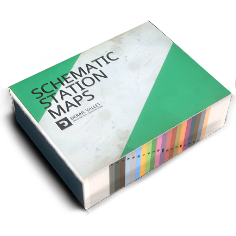Translations:Engine & Compression Brake/2/en: Difference between revisions
Appearance
Importing a new version from external source |
(No difference)
|
Revision as of 15:34, 28 February 2025
To engage the engine brake, the driver needs to disengage the throttle and have the reverser set in the direction the vehicle is moving. The losses in the engine cause it to slow down over time, and even more so at higher RPM. With a mechanical transmission, this slowing down directly affects the vehicle speed too. Therefore, selecting a gear where RPM is the highest, within safe limits, will get the most out of the engine brake, and if a train is light enough it will slow down from mere disengagement of the throttle.
